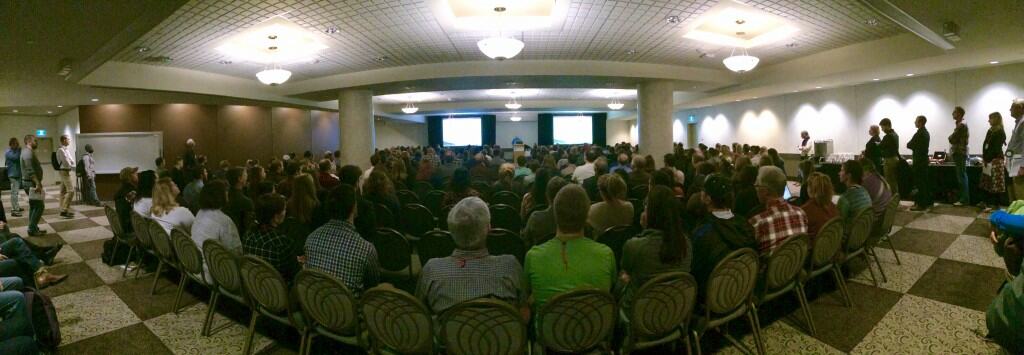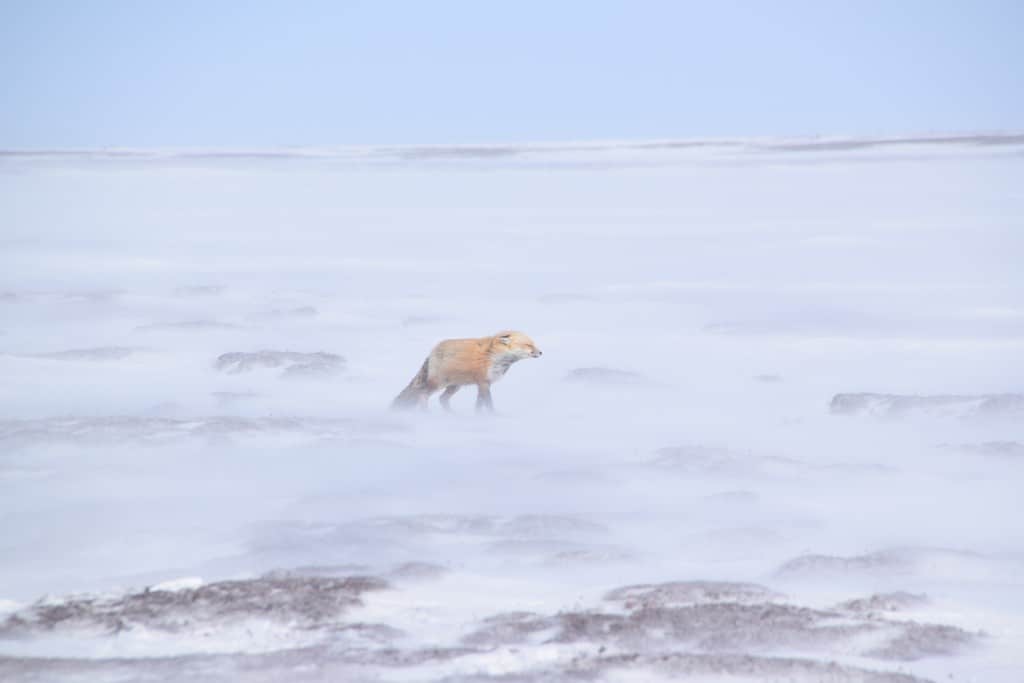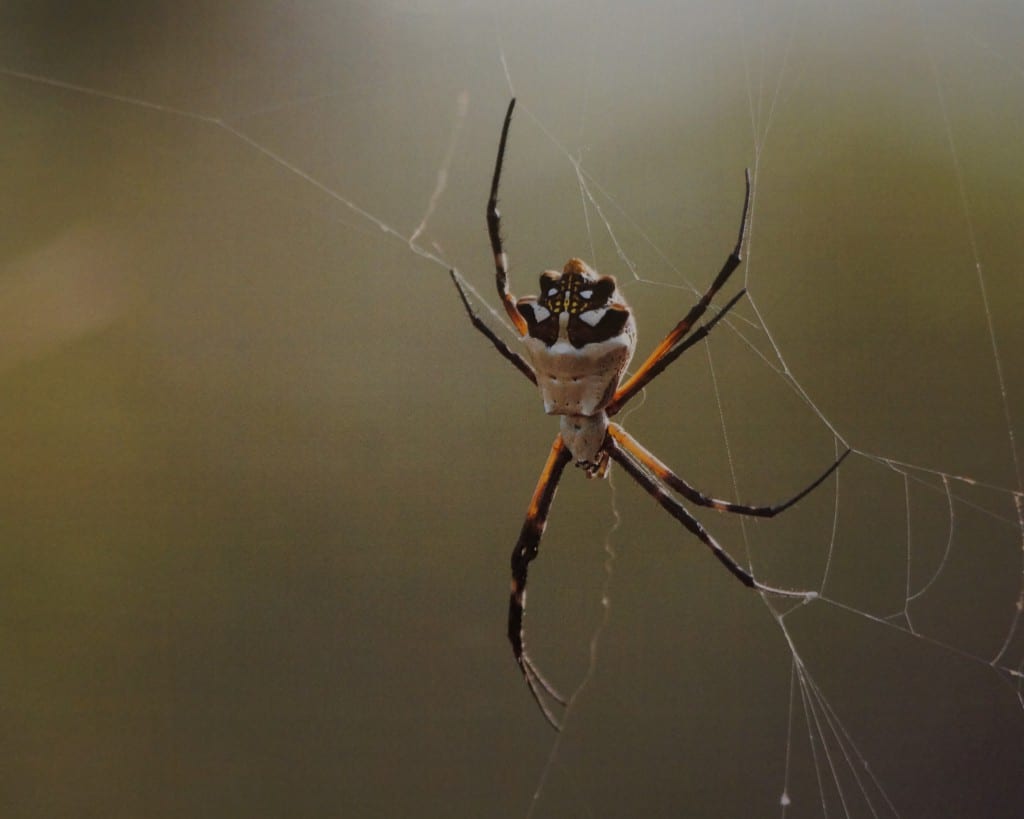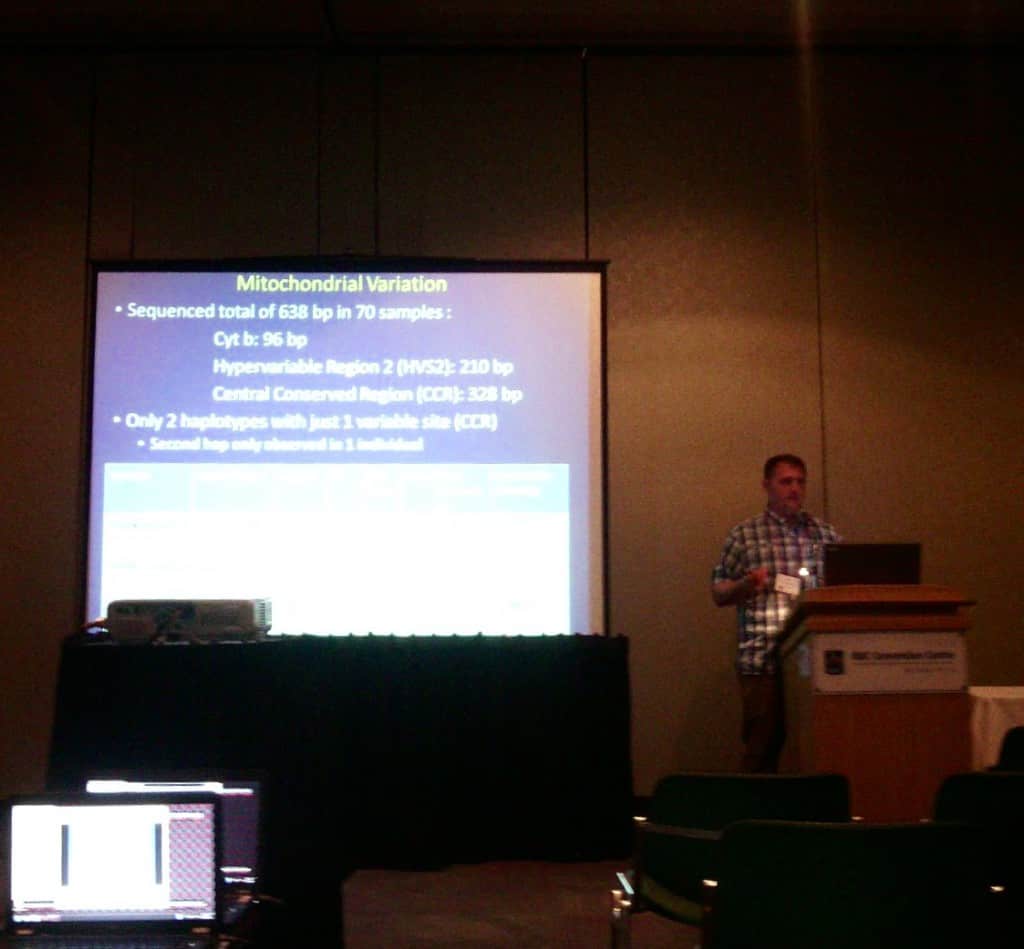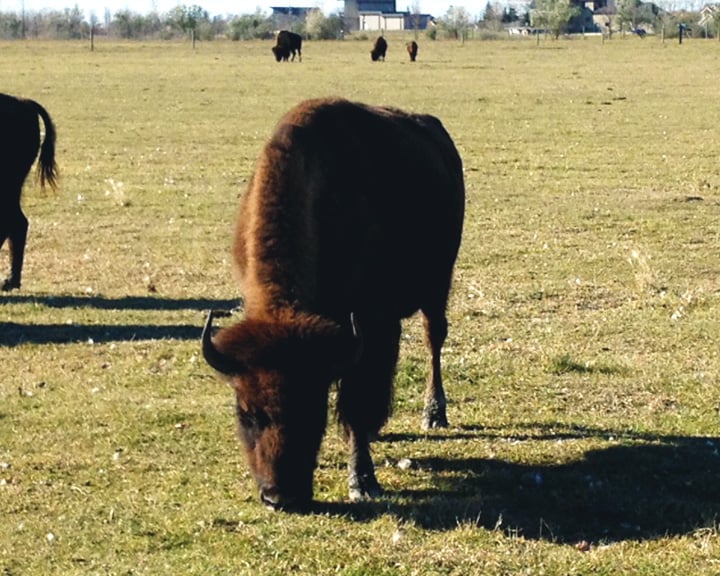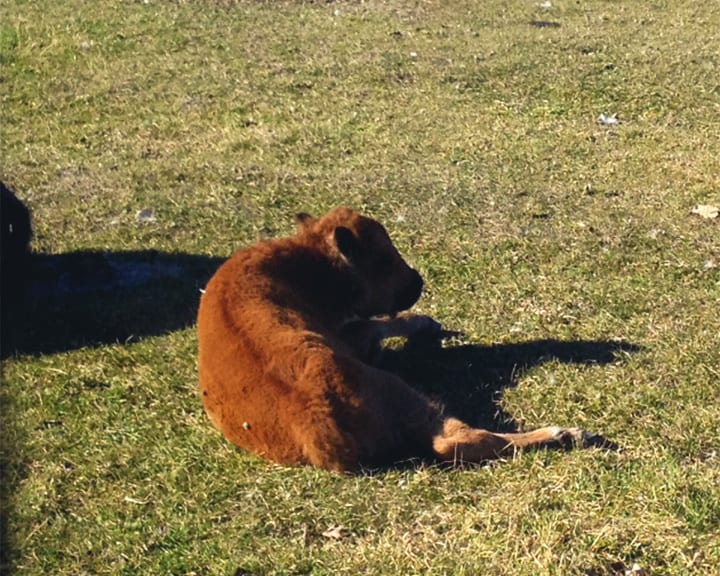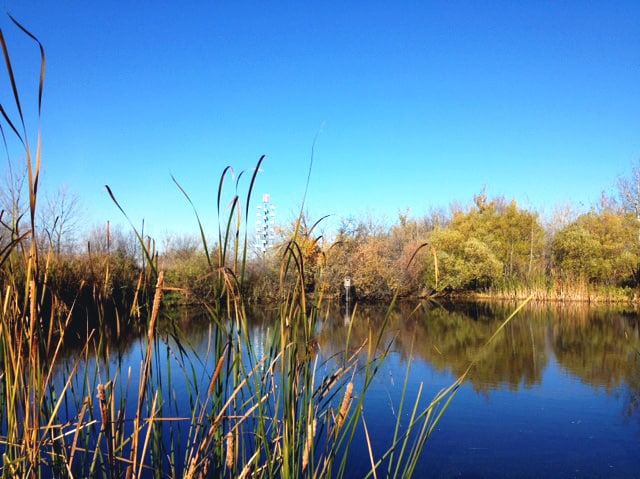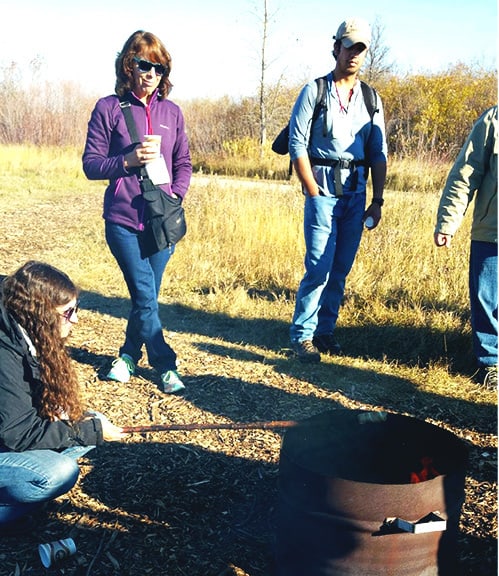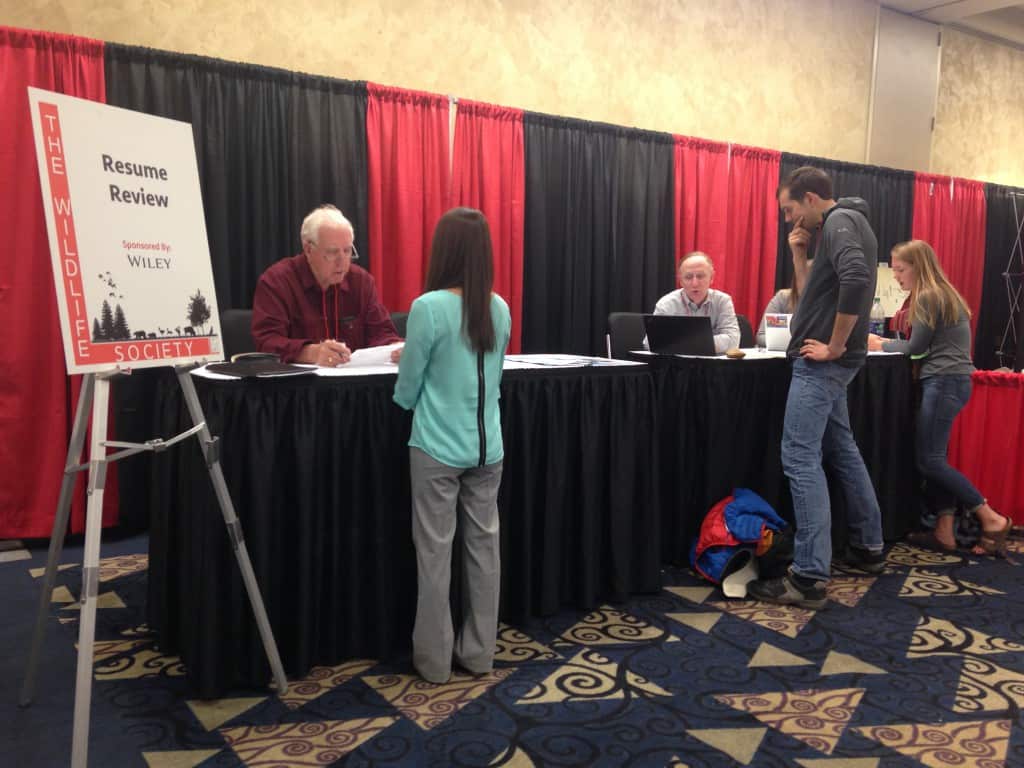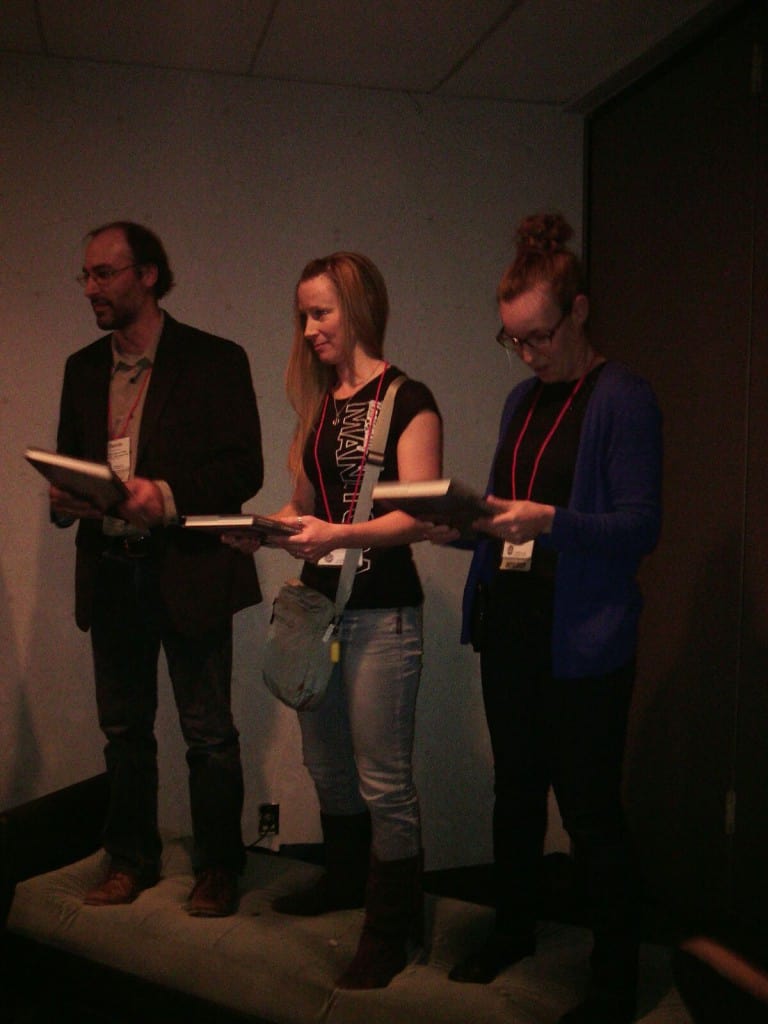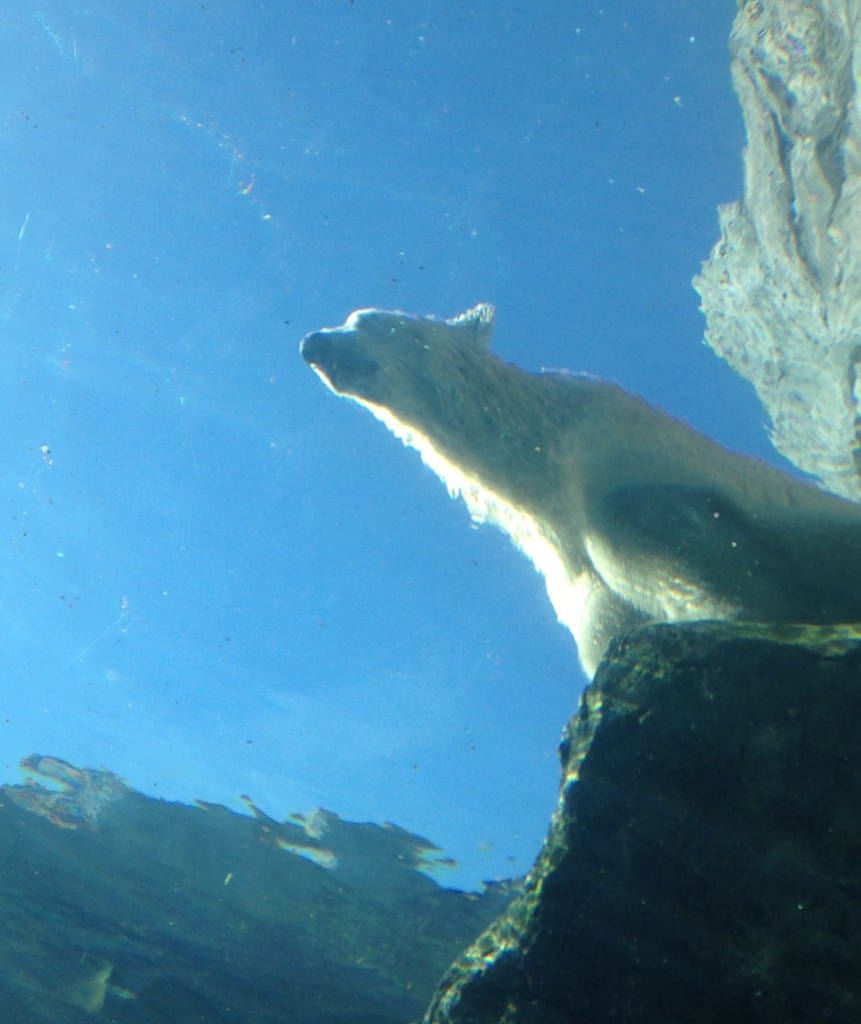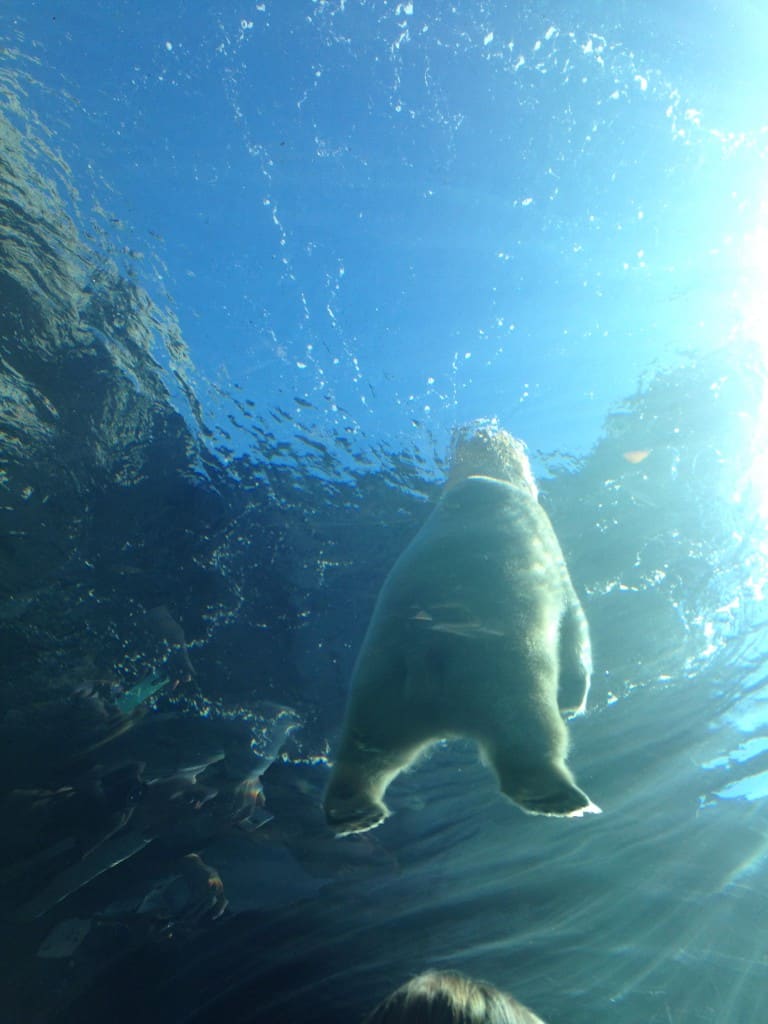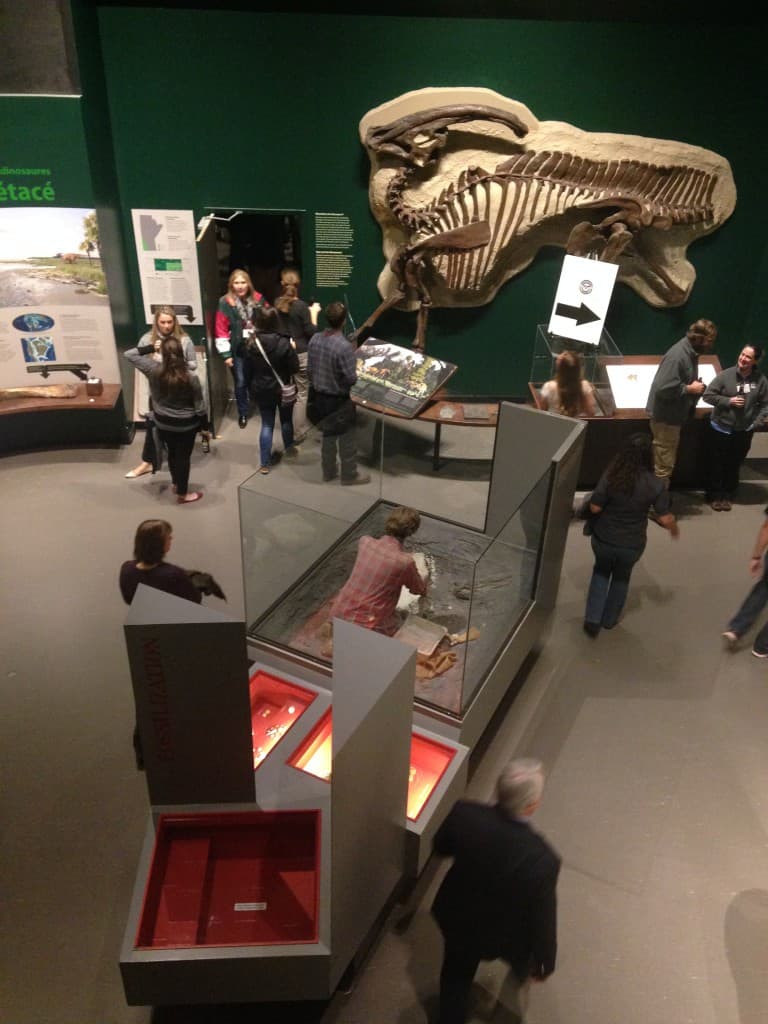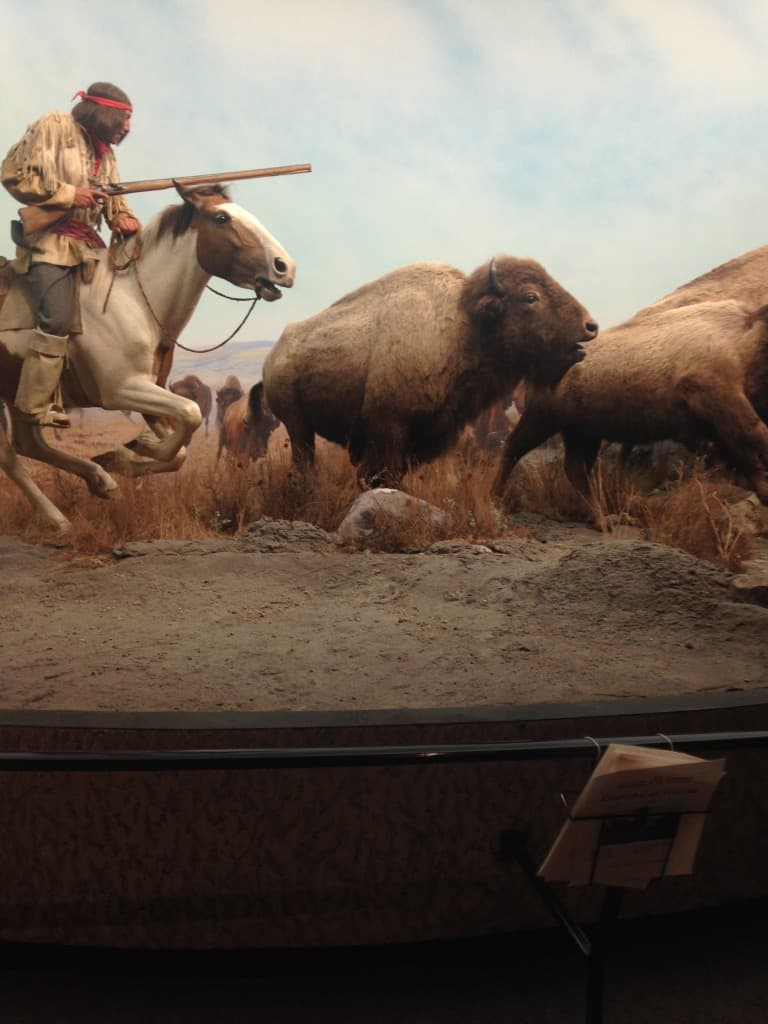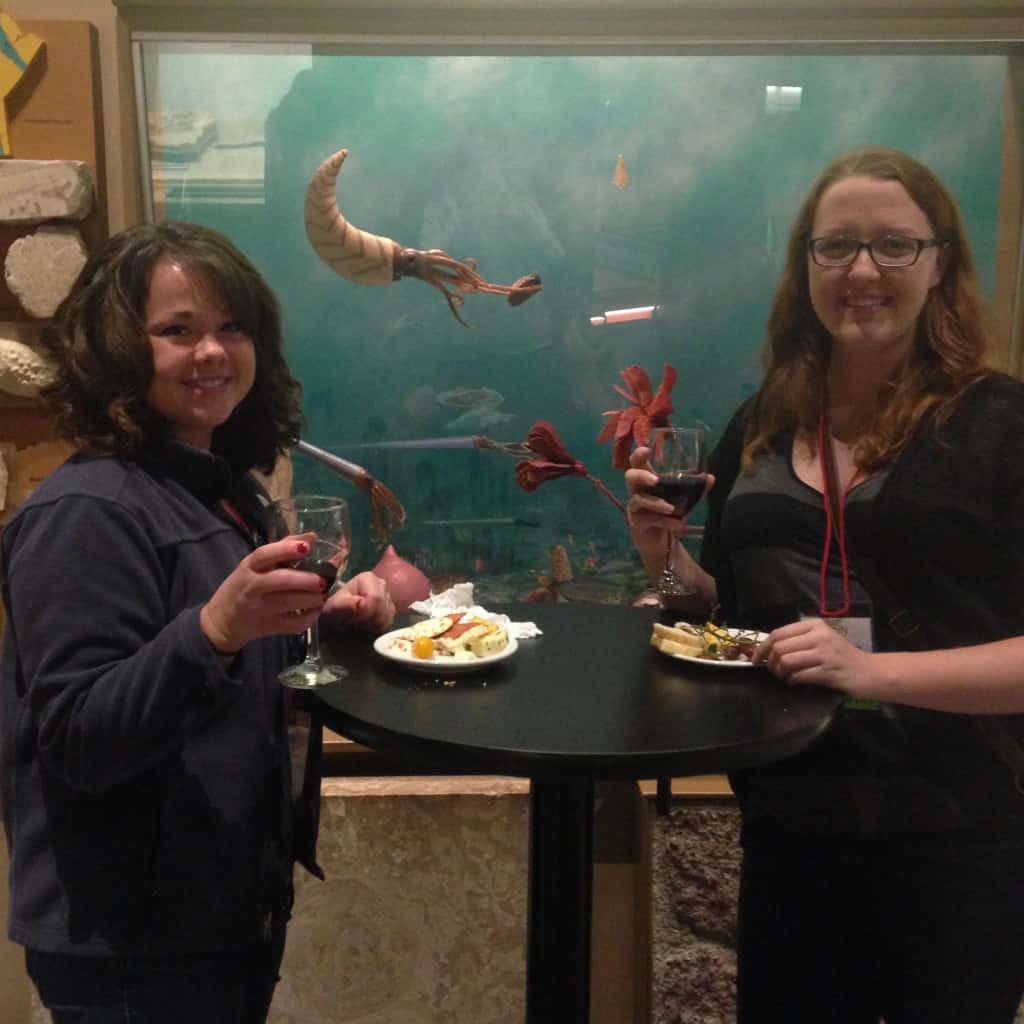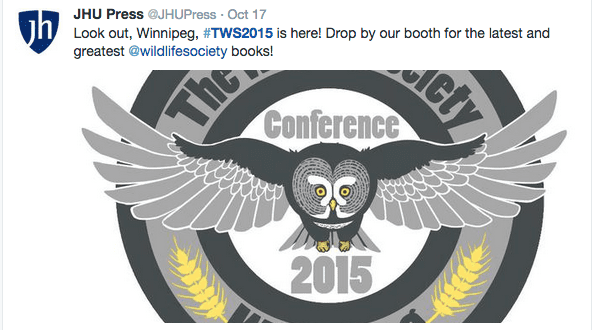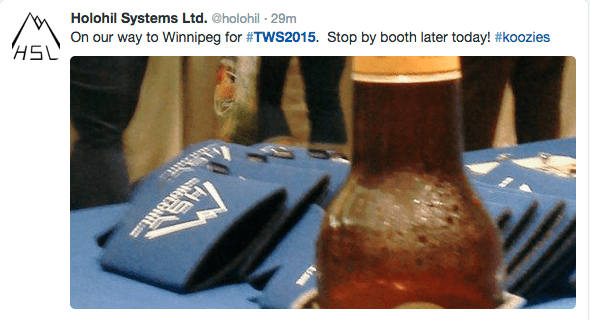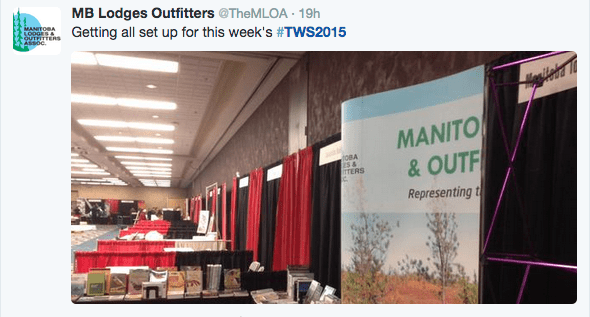Share this article
Live from Winnipeg!
Wednesday, October 21, 2015
10/21/2015 4:30 PM
Contributed Papers: Wildlife Diseases and Toxicology
“Impacts of Insecticide Plague Treatment on Populations of Deer Mice in Prairie Dog Colonies”
Prairie dogs are an important species — especially for animals such as black-footed ferrets that eat them.
However, prairie dogs have been exterminated, shot and have had their populations destroyed in the past by the plague — a disease introduced in the early 1900s that’s transmitted to prairie-dogs through fleas. “If you don’t have large areas of prairie dogs, you won’t have black footed ferrets,” said Robert Gitzen, an assistant professor at Auburn University.
As a result, vaccinations such as Deltamethrin are dusted in certain areas to reduce the number of fleas. Gitzen set out to determine how Deltamethrin affects small mammals including deer mice in Wind Cave National Park.
“There’s no strong evidence that they’re surviving better,” Gitzen said. “But it’s not wiping out deer mice per-say — that’s a plus.”
10/21/2015 2:19 PM
Happy Birthday “Ding” Darling!
Watching the film “America’s Darling: The Story of Jay N. “Ding” Darling” was a great way to celebrate the artist and conservationist’s 139th birthday. In the film, Darling’s great-great grandson Chris Steffen and great grandson Kip Koss, share stories about Darling’s life.
Darling, born in 1876, grew up in Norwood, Michigan and then moved to Sioux City, Iowa in 1886. He began sketching at the young age of eight and continued throughout his life and eventually became a well-known American cartoonist who won two Pulitzer Prizes.
Koss remembers stories about Darling getting into trouble at Yankton College where he went to school in South Dakota because he was sketching funny cartoons of his professors and other faculty wearing tutus.
Among many of his accomplishments, Darling designed the first Duck Stamp, a stamp that helped raise revenue for conservation. Also, because of all of his work on Sanibel Island, the J.N. Ding” Darling National Wildlife Refuge in southwest Florida is named after him.
10/21/2015 12:30 PM
It was a full house at our 2015 Ignite TWS today! The room was filled with lots of wildlife talk and plenty of laughs.
Ken Wilson kicked off the rapid fire event by addressing the challenges to bring more young people and an increasingly urban demographic into the world of wildlife, as well as calling for the need for more diversity in the world of hunting.
For Selma Glasscock, the assistant director of the Welder Wildlife Foundation, the need to achieve significance in wildlife conservation work involves finding the right people to support you, and having a desire to make positive change.
“If your passion is tied closely to your career you will never really work a day in your life,” she said
Nova Silvy, an associate department at Texas A&M University and Aldo Leopold Award alumni, cautioned researchers about the danger in getting too locked into research methods that may be detrimental to the conservation you are trying to achieve. Sometimes when biologists tag birds too much, or have contact with other wildlife, it can lead to increased chances of predation for those individuals, he warned.
Tim Van Deelen, the Beers-Bascom professor in conservation at the University of Wisconsin-Madison, spoke up for the need to increase the visibility and scope of The Wildlife Society’s certification program.
“If the best you can be is a cheerleader, be the best damn cheerleader,” he said. “Give our society and profession the dignity and respect that it deserves.”
Chris Williams professor of wildlife ecology and conservation at the University of Delaware, celebrated 100 years of waterfowl conservation.
Jacqui Frair, associate director of the Roosevelt Wildlife Station, talked about the difference in focusing on an academic path in conservation biology or wildlife ecology.
“The lines used to be much clearer but they are getting a lot fuzzier,” she said. There is no real difference between the two in terms of what jobs students eventually get, she concluded.
Jonathan Derbridge, a PhD candidate in wildlife conservation and management at University of Arizona, argued for the need to make the idea of conservation our planet just as sexy as the idea of colonizing Mars. “Let’s make what we do more interesting to normal people,” he said. “It’s just a matter of getting priorities right, that’s it”
10/21/2015 11:45 AM
Humboldt State University Wins Quiz Bowl!
What is the highest honor a wildlife biologist can achieve? What year was The Wildlife Society Founded? What was the first national park that was established in the world?
At the annual Quiz Bowl, wildlife biology students took a stab at these questions as well as much more difficult ones. Tarleton State and Paul Smith College kicked off the event attempting to answer more questions correctly than the other university.
Students impressed the audience multiple times throughout the event. For example, a student at Paul Smith College was able to identify all four warblers just by looking at photos of them.
Humboldt State University took the win, and received a plaque with the university’s name emblazoned on it that will hang at TWS headquarters as well as a plaque to display at their school. Humboldt State University was the champion last year, and worked hard to maintain their great reputation this year.
“Winning the quiz bowl was exciting,” said Abby Rutrough, an undergraduate student at Humboldt State Univeristy Quiz Bowl winner. “There were so many smart and well-rounded teams, playing them was fun and challenging. My proudest moment was coming back to our group after the first game. Our fellow students vote for who will be on the Quiz Bowl team and they put a lot of faith in us, so it was amazing to see how happy and proud that first win made everyone.”
An article on The Wildlife Society’s website will follow with interviews from the winners.
Answers to Questions Above:
- What is the highest honor a wildlife biologist can achieve? The Aldo Leopold Award
- What year was The Wildlife Society Founded? 1937
- What was the first national park that was established in the world? Yellowstone National Park
10/21/2015 10:00 AM
Congratulations to those who took home a prize during last night’s Photo Contest Awards, and thank you to all of our photo contest participants for sharing your work with us and we look forward to seeing what you bring to Raleigh in 2016.
Stay tuned for an article featuring all of our winners.
Peoples Choice, red fox by Kyle Ritchie
Kyle Ritchie was in Churchill, Mb. checking dens during research on red and Arctic foxes. It was a cold day in April, so much that the researchers could barely write on the sheets. When this red fox ran out, he snapped a quick shot. “It was the worst day ever. That was the one bright spot in the day,” he said.
Best in Show, spider by Chad Wildermuth
Chad Wildermuth was looking for a game camera in the bush in south Texas but had another camera with him when he ran into this spider. He said he wasn’t scared, only a little worried about crawling through the web. “That shot came out a lot better than I expected.”
TUESDAY, OCTOBER 20, 2015
10/20/2015 6:00 PM
Panel Discussion: Women of Wildlife at Work
Here’s a riddle: A father and son were in a car crash. When the ambulance arrived at the hospital, the boy was taken into surgery. The surgeon looked at the patient and said, “I can’t operate on that patient — that’s my son.”
Confused? So was Tabitha Grace, one of the women on the Women of Wildlife at Work panel, when she first heard the riddle. The answer? The surgeon was the boy’s mother. Most people assume the surgeon must be a man.
Assumptions like this and other issues are not uncommon for women in the wildlife biology field as well. At the event, women in all stages of their career including Grace, who got her PhD studying bears, Erin Saunders, who is completing her master’s degree studying wildlife, and Misty Sumner, who works at Texas Parks and Wildlife, were part of the panel. Research scientist Art Rodgers was also on the panel as the only male.
The panel answered questions from how they got started in wildlife to how women should dress for work in the field or in business situations. The event opened up important conversations about how The Wildlife Society and other wildlifers can help women continue to succeed in their wildlife biology careers. For some people who make light of gender issues in the field or tell women to lighten up, Saunders said her response is, “If I lighten up any more, I’ll float away.” Further, women such as Sumner had to go along with sexist jokes throughout her career in order to make it to where she is today.
The whole panel agreed that everyone should continue to speak about gender issues in order to make positive changes. Helping women in wildlife will also help the bigger diversity picture, they said. “Encourage females, young and old to run for positions, and then when you get them to run, vote for them,” Saunders said. “We need to keep talking about it.”
10/20/2015 4:30 PM
Population Assessments of Mammals
“Range Wide Snow Leopard Phylogeography Reveals Major Regional Management Units”
Jan Janecka, assistant professor, has been working on a collaborative project tracking snow leopards across Central Asia in an effort to figure out what kind of classification the elusive cats should receive in terms of populations and subpopulations. They used a combination of non-invasive genetic techniques like scat collection and combined them with other techniques like camera traps.
“Snow leopards use latrines in very prominent areas,” Janecka said.
10/20/2015 3:45 PM
New Technology and Applications
“Subpopulation-Scale Genetic Capture-Recapture of Loggerhead Turtles: Accounting for Site Fidelity in Clutch Frequency Estimations”
Joe Nairn of the University of Georgia is employing a new technique of tracking the DNA of loggerhead turtles by removing single eggs from nests and scraping off a little organic material. Their goal is to find out how loyal individual turtles are to certain nest sites.
“The majority of turtles nest within 20-25 miles of each other,” he said of loggerheads in Georgia and South Carolina. But in the northern part of their range, they had less site fidelity. While it’s just a guess, he believes that the northern loggerheads may have more of a sense of wanderlust than their southern cousins. “Turtles that wander more are going to establish newer populations,” he said.
10/20/2015 3:05 PM
Conservation and Management of Birds
“Managing Pond Habitat for Waterbirds: Evaluating Waterbird Habitat use in the Largest tidal march restoration Project on the West Coast of the United States”
Lacy Smith said that the project is working to restore tidal march to areas of San Francisco Bay. Habitat managers are cutting breaches in ponds to allow tidal water to come in and allow tidal plants to eventually recolonize in the areas. They’ve also created some small islets that birds can use.
This has resulted in an increase in water birds, according to yearly counts taken from 2002 to 2014.
“Overtime we have this positive increase in abundance,” Smith said, adding that dabbling ducks have stabilized in their populations while diving ducks numbers continue to go up.
10/20/2015 2:00 PM
FortyWhyte Alive: Bison, Birds, and People Experience
Conference attendees have been getting up close and personal with a herd of 30 munching, snorting bison, learning about a wide variety of bird species on a nature walk, and observing Burrowing Owls alongside Prairie Dogs. They are also learning about the indigenous people and culture, participating in an Addle Addle (spear) competition, and getting a taste of fire-roasted bannock and wild bush tea.
10/20/2015 1:00 PM
The Boreal Forest has some of the world’s largest undammed rivers, indigenous communities, millions of birds, and diverse ecosystems, according to Jeff Wells, the organizer of the plenary session “Balancing Conservation and Development in the Final Frontier – Canada’s Boreal Forest.”
10/20/2015 11:48 AM
Professionals Provide Expert Advice at Resume Review
Students are eagerly waiting in line for wildlife professionals to review their resumes. They are getting advice from retired professionals who have tons of experience in the field as well as younger professionals who know first-hand what it is like applying for jobs these days.
Vince Crichton, a conservationist, guest speaker and lecturer who is retired, advises students to put the most important information toward the top in their resume. When he was reviewing resumes of potential employers in the past, he went through large stacks quickly, so what students put first is important.
Manitoba Chapter Secretary-Treasurer Rosemary Dohan is also helping students showcase their experience and motivation through their resumes. “There seems to be a rumor you have to have your resume on one page,” she said. “If your first page is amazing I’m going to flip it over and read the rest.”
Colorado State University student Savanna Smith said Dohan helped her better her resume today. “For relevant stuff I wanted to put on my resume, I didn’t know how to best format it and present it,” Smith said. “Rosemary helped me decide how to section it out and format it so information I’m putting on my resume is relevant to jobs I apply for.”
10/20/2015 9:00 AM
Last night’s Student-Professional Networking Event was a mix of wildlife professionals, wildlife students, TWS Awards announcements, Student Research in Progress Poster Sessions, our 2015 trade show, and food and drinks, all in one room. Here are some of the things attendees had to say.
“I’m excited to see a diverse number of fields!” -Siena Muehlfeld Madison, UW Undergrad
“I don’t know what I want to do with wildlife, but I know I want to do something with education. I want to see what I want to do education about.” -Gina Lehner, Madison, UW Undergrad
“I’m here to see what everyone is working on, and to see how I fit into the equation.” -Shelby Peterson, Madison, UW Undergrad
MONDAY, OCTOBER 19, 2015
10/19/2015 6:45 PM
Dennis Brannen, Vicki Turim and Maria Arit gain recognition for developing a boreal caribou strategy at the Canadian reception.
10/19/2015 4:15 PM
Polar Bears Leave TWS Members in Awe
The polar bear capital of the world doesn’t disappoint! Attendees at the International Polar Bear Research & Conservation Center field trip today walked through glass enclosed tunnels surrounded with water, expecting to see polar bears — and sure enough, as attendees looked up, there was one sitting on a ledge above the water.
After learning about the history of the bears’ decline in the 1970s and 80s as well as information on the polar bear alert program, a program designed to protect the safety of people as well as the welfare of polar bears, the eager attendees made their way to facilities where the bears are usually held after they are captured.
Then, attendees were able to watch the bears swim through the water and then view the polar bears outside on the land. One bear got up close with visitors, and continued to lick the gate separating it from visitors while making a rumbling noise, showing its affection for the people visiting. This is called “purring” according to the researchers at the center.
10/19/2015 2:46 PM
Featured Session: The Latest in Wildlife Services Research
Mouse butter – it’s the newest tool being used to tackle the invasive brown tree snake. During today’s Featured Session: The Latest in Wildlife Services Research, several Wildlife Services employees spoke about their cutting-edge research and wildlife management techniques.
Travis DeVault of Wildlife Services says that they are developing a special “mouse butter” that mimics the scents of dead mice but can be applied to cheaper spam to deliver poison to invasive brown tree snakes.
“Most snakes are very good scavengers,” he said. “When you put the mouse butter on the spam, it approaches the effectiveness of the dead mouse…Dead mice are the current gold standard.”
10/19/2015 11:15 AM
Contributed Papers: Ecology and Habitat Relationship of Mammals
“The Economics of Reproduction: American Black Bears as Income Breeders”
Milking a bear isn’t something everyone has done, according to wildlife biologist John McDonald, but as part of his research, McDonald had to complete this difficult task.
McDonald was studying whether fall food production is important to black bears that hibernate for four to six months during the year. He was looking at whether the bears were “capital breeders,” that rely on stored resources such as fat to reproduce, or “income breeders,” that use rely on other food resources such as red oak.
Although he hypothesized young females would more successfully have their first litters following a good mast year with heavy red oak acorn production compared to a poor mast year, that didn’t pan out, he said.
“Maybe fall food isn’t as important as we thought,” McDonald said.
10/19/2015 9:00 AM
Our opening event was a hit last night at the Manitoba Museum. Thank you to everyone who came out to celebrate our first official night at our 22nd conference.
Food, friends and museum exhibits made for an outstanding opening conference event this year. Attendees learned about Manitoba’s natural history and about the history, triumphs and experiences of the people of Manitoba.
Exhibits included paleontology as well as the animals in the province. For example, visitors saw realistic bison and snake-piles. Attendees were also able to stroll through a replica of the waterfront of 17th century England, where a boat — a two-masted ketch Noncsuch — sits waiting for visitors to climb aboard and learn about how the boat sailed into the Hudson Bay.
Enjoying the company of other conference goers, attendees mingled and met new people while having drinks and delicious food. The event provided a great combination of learning about the history of Manitoba and meeting great people.
A view of the dinosaur exhibit.
As soon as attendees entered the museum for the networking event, they were welcomed by realistic-looking bison.
Emily Williams (left), a graduate student at Kansas State University and Emily Ferlemann (right), the director of communications for the Prusten Project, a project to study the social vocalizations of tigers, mingle at the Night at The Museum Networking Event.
10/19/2015 7:50 AM
Good morning, Winnipeg!
Our Members Activity Center opens today at 10:00am. Come visit our exhibitors and Student Research in Progress Poster Sessions, grab a refreshment during our Refreshment Breaks at 10:10am and 3:10pm, and network with students and professionals this evening at our Student-Professional Networking Event from 7:30-10:00pm.
Let us know what you’re up to in the TWS 2015 Members Activity Center!
@wildlifesociety #TWS2015
SUNDAY, OCTOBER 18, 2015
10/18/2015 5:40 PM
Contributed Papers: Ecology and Habitat Relationships of Mammals
“Ecological Aspects of Coyote-Human Conflicts in Cape Breton Highlands National Park, Nova Scotia”
Stanley Gehrt, an associate professor of wildlife at the Ohio State University says that surveys conducted on coyotes in Cape Breton show that contrary to normal lines of thinking, the animals thought to be responsible for killing Canadian folk singer Taylor Mitchell in 2009 don’t seem to be used to eating human food, or living near humans. In fact, they had a relatively unvaried diet based on wild food sources.
“The vast amounts of coyotes in Cape Breton are not using human food at all,”
said Gehrt, a Wildlife Society member. “The use of human food isn’t related to the conflict.”
Check out our article on coyotes in Chicago for more information on Gehrt’s work.
10/18/2015 4:45 PM
Contributed Papers: Conservation and Management of Birds
“Population Reduction Efforts and Spring Nutrition in Midcontinent Lesser Snow Geese”
After studying lesser snow geese as an undergraduate student, Megan Ross was able to complete a study on how special harvest seasons have affected the geese as a master’s student at the University of Saskatchewan.
Land-use changes including agricultural expansion and intensification caused the geese to reach unprecedented population numbers in the 1980s and 90s in areas such as the Hudson Bay, she said.
While Ross predicted that the geese’s nutrient storage would decline since the spring conservation harvest, her study showed that it has actually increased. “Why are they in so much better condition in the 2000s compared to the 80s and 90s?” Ross said she and her colleagues asked. She said this could reflect a few things including changes in their diet including peas, chickpeas and lentils.
10/18/2015 4:25 PM
Why do wildlife matter?
“As an Anishinaabe, wildlife matters because it is part of who we are and who we were and who we want our children to be. The animals and our earth are our connection,” Justina Keewatin, an undergraduate student in environmental studies at University of Manitoba.
Tweet us why wildlife matter to you @wildlifesociety #TWS2015
10/18/2015 3:00 PM
Contributed Papers: Conservation and Planning
“Beavers as a Watershed Management Tool: Articulating Alberta’s Regulatory Context”
Some Alberta property owners love beavers and some hate them due to their ecosystem engineering. But the province is still like the Wild West in terms of regulation that controls relocation and management.
Erin Specht, a recent graduate at University of Alberta, says:
“The actions of beaver relocation are occurring within a regulatory void in Alberta. Therefore it’s important that the province develop laws that properly address beaver management.”
10/18/2015 2:00 PM
TWS got a mention in Winnipeg Free Press for the world premiere screening of The Private Lives of Wild Creatures at our conference!
More about the film here.
10/18/2015 10:00 AM
Over 1,500 attendees are here in Winnipeg to kick off the 22nd TWS Annual Conference with our first plenary, “Why Do Wildlife Matter?”
“Why do wildlife matter to you, your family, neighbors, employers? I really think that question is going to solidify this conference.” -Rick Baydack
“It’ll be your challenge, for you young people here, to address the question, why do wildlife matter?” -Robert Warren
“Special experiences we share with important people in our lives make wildlife matter to us.” -Erin McCance
“I learned very early in my young life to see my peoples’ idea of the earth was different.”
-Ovide Mercredi
“As long as you only talk within your own profession, you lose.” – Richard Louv
Header Image: Downtown Winnipeg. Image Credit: Robert Linsdell, licensed by cc 2.0





